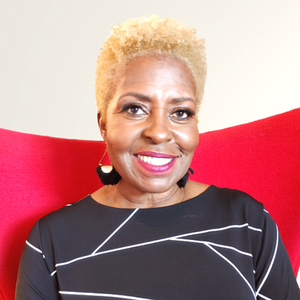Op-Ed: The Fine Line of Executive Presence for Professional Women
 As a coach, I am often hired by companies to work with very high potential women (and men) who are destined for senior leadership, the executive committee and in some cases even have a real shot at being a CEO or CFO of a publicly traded company, even a Fortune 50.
As a coach, I am often hired by companies to work with very high potential women (and men) who are destined for senior leadership, the executive committee and in some cases even have a real shot at being a CEO or CFO of a publicly traded company, even a Fortune 50.
Around 90% of the time, the words ‘executive presence’ come up as part of the brief, or from the women themselves, on what they want to work on in the safety of a coaching relationship. Executive presence really can mean a myriad of things and it is a term I do not love as it has connotations of assimilation to legacy male traits and behaviors that, when transposed, seem awkward or, at their worst, are actually things that women get penalized for behaviorally. As the past thirty years has shown us, progress can be tricky when societal norms hold firm outside the office. ‘Who is rewarded for what?’ is the ultimate diagnostic question for a workplace culture analysis, not just ‘how many women and BIPOC are in the building?’ It is not Noah’s Ark alone, it is about who gets to be Noah and his ultimate successor and why that is. Also, who does the work and who gets the glory?
It is the double standard, academically defined and much written about double bind that still keeps women out of the office from the White House to the principal’s office (with over 64% of men holding that job while over 80% of teachers are female) to the corner office.
Here are the two fine lines that tend to pop up when people get perception-based feedback.
- Passive-seeming versus Assertive. When women are perceived as passive, it is often because they are in fact exercising positive traits but culturally in the organization, more assertive or aggressive behaviors have been rewarded. It is interesting when someone gets labeled conflict avoidant as leaders do need to be able to have the hard conversations and deliver messages upwards to the board and downwards to the team that are sometimes not as favorable as one would hope for. Collaboration is something that should be rewarded in companies but through the lens of innovation and evolving process for best results. Gravitas is really a key trait for all leaders so that the people following them can really trust in what they say as true from an expert or authority perspective.
- Aggressive versus Assertive. When women are told that they are aggressive, it is often these days accompanied by people admitting that they wouldn’t think the women getting the feedback would be hearing that same comment if she was a man. So, awareness of the gendered nature of the two sides of the positive and negative stereotype is encouraging, yet still remains a coach’s main fare more often than not. What do you do if you hear this? Separate the “what” from the “how” as it is not about competence or delivery of the tasks and responsibilities, but rather how you make people feel and that can be easily addressed with active listening, charm, captioning and aligning tools to put into your toolkit.
Recognizing and honing your own leadership learning and communication styles
To grow into the leader you want to be on your leadership journey, start with you and understanding your styles and preferences regarding work. You can recognize that others have a different style to you, once you see styles for what they are and how they show up in communications, learning and thinking. How do you uncover your style? The fastest way is to work with a good executive coach who specializes in executive and leadership development, as opposed to straight career coaching.
But, if you don’t have access to that type of resource, then ask yourself: what are your style preferences when it comes to communicating and being communicated with? Are you direct and candid or do you prefer to couch your requests in sentences where the audience can hear a gentler message, sometimes amongst other messages? We are all different and there are many free versions of Myers Briggs and other great tools free online to start, such as SCARF (the neuro-leadership institute) and Emotional Agility report by Dr. Susan David. The Learning Styles Inventory (LSI) is not expensive and comes with a full explanation of how you learn and apply knowledge. Curious souls on their development journey will benefit.
We are all somewhat beholden to how we were raised in our families and societies, unless we have taken the time to disrupt that – which you can start doing today by reading Immunity to Change. Doing this with a coach, or even by yourself, will help you to understand what is stopping you from reaching goals in any sense, including D&I ones.
Nicki Gilmour is the founder of theglasshammer and also works as a leadership and executive coach, helping the companies to lean in while empowering executives to grow and develop. If you would like to be coached by Nicki please email nicki@theglasshammer.com or book an exploratory session. If you are a leader or an HR professional who wishes to know more about the Organizational development work we do check out our site evolvedemployer.com


